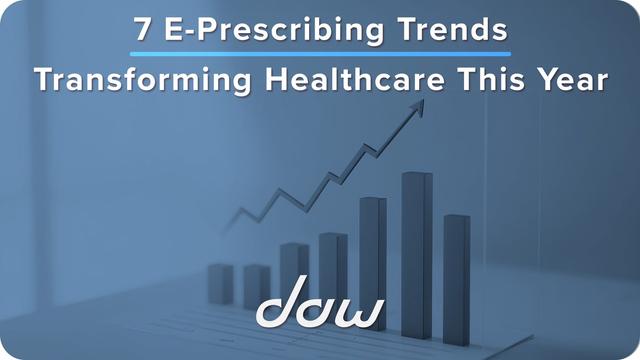The way healthcare providers prescribe medications is evolving fast—and it’s not just about convenience. In 2025, e-prescribing is playing a major role in improving patient safety, streamlining workflows, and reducing costs across the board.
As more practices adopt digital tools, it’s important to stay informed about what the top e-prescribing solutions are offering and what trends are shaping the future of care. Here are seven key trends transforming healthcare through e-prescribing this year.
1. AI-Powered Prescription Decision Support
Artificial intelligence is enhancing clinical decision-making like never before. Many e-prescribing platforms now use AI to:
- Recommend appropriate medications and dosages
- Flag drug interactions and allergies
- Suggest alternatives based on a patient’s insurance or formulary
These smart tools reduce the chance of human error while saving time—especially helpful for busy providers managing complex cases.
2. Real-Time Prescription Benefit (RTPB) Integration
One of the biggest advances in e-prescribing is the integration of real-time prescription benefit (RTPB) checks. This feature lets providers:
- Instantly view patient-specific medication costs
- See covered alternatives and pharmacy options
- Prevent prescription abandonment due to price shock
Patients appreciate transparency—and so do clinics focused on adherence and satisfaction.
3. Cloud-Based and Mobile-First Solutions
Gone are the days of needing to be in the office to prescribe. Cloud-based, mobile-ready platforms let providers send prescriptions from virtually anywhere—whether they’re at a satellite clinic or handling a telehealth visit from home.
This flexibility is key in 2025, as eprescribing adoption rates climb across specialties and care settings.
4. Increased EHR Interoperability
Top eprescribing solutions no longer function in silos. They integrate tightly with major EHR systems, making it easier to:
- Share patient data in real time
- Reduce duplication and manual data entry
- Streamline documentation and charting
Federal interoperability initiatives like TEFCA are also pushing the industry toward more unified, data-driven care.
5. Growth in Small Practice Adoption
E-prescribing is no longer just for large hospitals or health systems. Small practices are quickly embracing digital prescribing thanks to:
- Affordable, easy-to-implement platforms like ScriptSure
- Simplified interfaces that reduce training time
- Incentives and regulatory requirements for EPCS (Electronic Prescriptions for Controlled Substances)
As a result, adoption is growing across solo and rural practices too.
6. Emphasis on Compliance and Security
With evolving regulations at both the federal and state level, practices are under pressure to meet strict standards—especially when prescribing controlled substances. Leading solutions now include:
- DEA-compliant EPCS workflows
- Multi-factor authentication
- Detailed audit logs and controlled access
Security is no longer optional—it’s expected.
7. Focus on User Experience (UX)
Providers want technology that works as seamlessly as a pen and pad. That’s why the best e-prescribing platforms in 2025 focus on:
- Clean, intuitive interfaces
- Fewer clicks to complete a task
- Integrated alerts that assist—not interrupt—the workflow
When providers enjoy using a tool, adoption and long-term satisfaction naturally follow.
Why These Trends Matter for You
The trends shaping e-prescribing in 2025 are more than just buzzwords—they represent a better, safer, and more connected way to practice medicine. Whether you’re just getting started or looking to upgrade, staying aligned with these innovations is crucial.
CTA:
Want to explore a platform that keeps up with these trends and delivers a powerful e-prescribing experience?
Request a ScriptSure Demo


